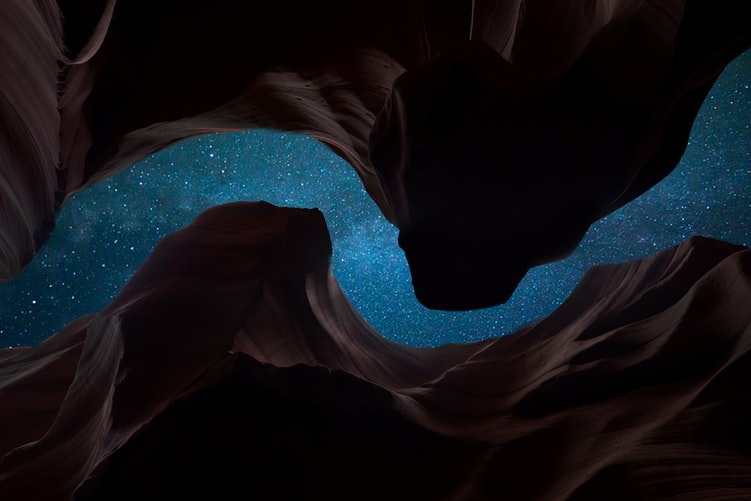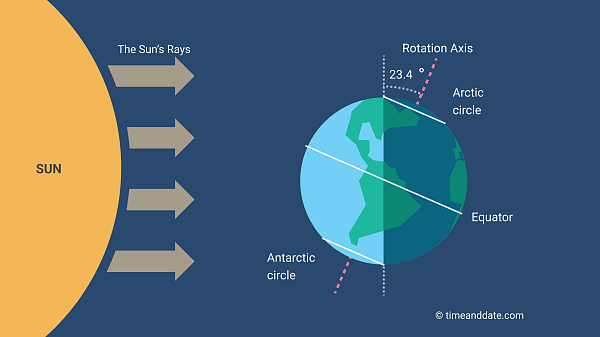
As we approach the end of this rather difficult year, there’s still plenty of chances for an escape— you only need to look up!
From a total solar eclipse to the best Great Conjunction of our lifetime, December is full of surprises that go beyond the usual events that occur at this time of the year. So pull out your telescopes and DSLRs and get ready to capture some of the most beautiful wonders of the night sky.
Here you have a complete list of the most important celestial events that will take place in December 2020.
Note: The time / dates mentioned are in accordance to the Indian Standard Time (IST) throughout the article, unless specified otherwise.
December 2 – 27 — Transition Of Jupiter’s Moons

Jupiter’s Galilean moons; lo, Europa Ganymede and Callisto, show various phenomena like transits, occultations, etc. as they zip around the huge planet in their orbits.
Below are the dates and the time of the transit by the moons across the face of Jupiter in December 2020.
| Date | Time | Moon |
|---|---|---|
| 02-Dec | 21:13 | Europa |
| 04-Dec | 20:59 | Io |
| 07-Dec | 20:42 | Ganymede |
| 13-Dec | 19:47 | Io |
| 20-Dec | 19:31 | Io |
| 23-Dec | 19:25 | Callisto |
| 27-Dec | 19:11 | Europa |
During the transits, the light of the Sun casts shadows of the moons on Jupiter’s disc. Though the moons themselves almost disappear during the transition, the captivating sight of small yet dark shadows of the moons sliding across the planet’s disc can be seen and photographed through a telescope.
December 4 – 17 — Geminids Meteor Shower

The Geminids shower is caused by the object 3200 Phaethon, which is believed to be an asteroid and takes about 1.4 years to orbit the Sun. Geminids, together with the Quadrantids, are the only major meteor showers not originating from a comet. It is considered by many to be the best shower in the heavens, producing up to 120 multicolored meteors per hour at its peak.
The annual meteor shower Geminids is expected to be active from 4th – 17th December. This year, it peaks on 13th – 14th December with around 120 meteors per hour. Best time for viewing will be from 11 PM onwards as the constellation will be close to the zenith at around 12:30 AM.
Meteors will radiate from the constellation Gemini, but can appear anywhere in the sky. The peak of the shower coincides with the new moon day and one can expect to see the meteors even from urban skies. It can be observed even with an unaided eye and serves as a good opportunity to take photos.
More info:
December 12 – 13 — Conjunction of Moon And Venus

Keep your eyes near the eastern horizon as the Moon and Venus rise in close proximity to each other on 13th December around 5:15 AM. The thin Crescent Moon on the day before the New Moon, paired along with the bright Venus, will be a spectacular sight for the naked eye and a great target for photography enthusiasts.
On 12th December, a few parts of the world like western North America, Hawaii, the North Pacific Ocean and northeast Russia will even be able to enjoy the Occultation of Venus by the Moon.
December 14 — Total Solar Eclipse

A solar eclipse occurs when the disk of the moon appears to cross in front of the disk of the sun. A total solar eclipse occurs when the moon completely blocks the Sun, revealing the Sun’s beautiful outer atmosphere, also known as the Corona.
This total solar eclipse, the last of 2020, will only be visible in parts of southern Chile and southern Argentina on 14th December in the afternoon. Some regions in southern South America, south-west Africa, and Antarctica will see only a partial solar eclipse. (Not visible in Asia).
More info:
NASA Map and Eclipse Information
December 21 — Jupiter & Saturn Conjunction

A rare conjunction of Jupiter and Saturn, also called a ‘Great Conjunction,’ will take place on 21st December. During this special event, the planets will be so close to each other that it will be a challenge to tell them apart with the naked eye. They will look like a large Double Planet. This conjunction occurs once only every 19 Years and 7 Months due to the two planet’s orbital paths in the sky.
Until 19th December, we will be able to see the planets separately in the western sky close to the Horizon just after sunset. However, between 20th – 23rd December, they will be so close that we won’t be able to tell them apart with the naked eye.
It will be the first Jupiter-Saturn conjunction since the year 2000, and the closest Jupiter-Saturn conjunction since 1623— a mere 14 years after Galileo made his first telescope! The next time the planets will come this close to one another (optically) would be in March 2080.
This is a once-in-a-lifetime event that you can view and photograph with the aid of a telescope anytime between 18th – 24th December.
More info:
The Great Conjunction | BBC Sky at Night Magazine
December 21 — Winter Solstice

The Winter Solstice, also known as December Solstice, falls on 21st December this year. Winter Solstice is an annual event that marks the Shortest Day (i.e. the Longest Night) of the year in the Northern Hemisphere. It generally occurs on 21st or 22nd December, but on rare occasions, may occur on the 20th or 23rd of December.
It is observed when the Earth’s Northern pole reaches the maximum tilt of 23.4 degrees away from the Sun. Although the Solstice itself lasts only a moment (10:02 AM GMT), the term is usually used to refer to the day on which it occurs. The day marks the beginning of the astronomical winter. After the winter solstice, days start becoming longer and nights shorter as spring approaches.
More info:
December Solstice | EarthSky.org
December 21 – 22 — Ursids Meteor Shower

The Ursids Meteor shower will peak on the night of December 21 and early morning of December 22 in 2020. The Ursids is a minor meteor shower, producing a mere 5-10 meteors per hour. It occurs annually between 17th – 25th December, usually around the Winter Solstice.
It’s best to view these at a location away from the city lights, primarily in the Northern Hemisphere. The first quarter moon will set just after midnight giving us nice, dark skies with excellent visibility for enjoying this event. The Ursid meteors, as the same suggests, radiate from the circumpolar constellation of Ursa Minor but they can appear in any part of the sky.
The Ursids is caused by the dust grains left behind by a periodic comet called 8/P Tuttle, discovered in 1790. It returns after about every 13 years and leaves behind the dust particles that make this phenomenon possible.
More info:
The end of the year, thus, presents us with an exciting month with plenty of opportunities to enjoy the skies with an unaided eye or with the right equipment to enhance the experience and even capture these amazing phenomena. Hope you have a wonderful month ahead and clear skies.
Any questions, suggestions, additional info, etc.? Let us know in the comments!
